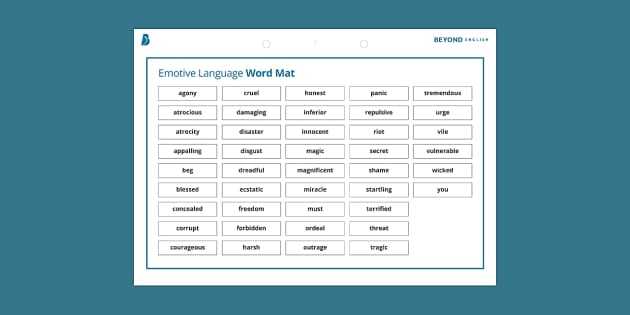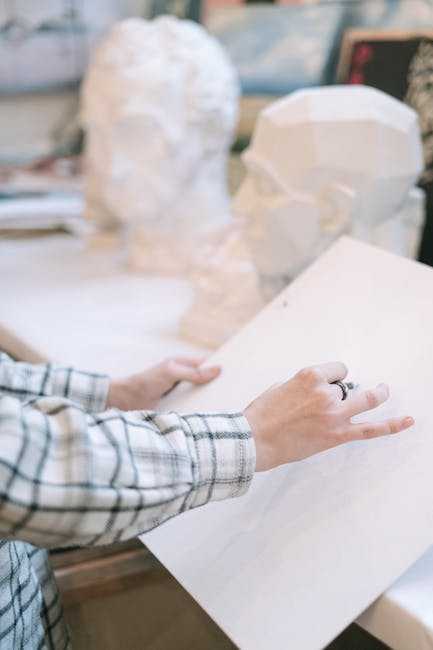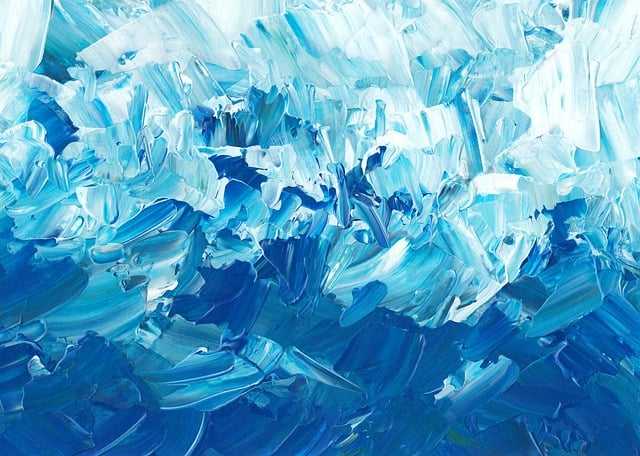Table of Contents
- Exploring the Foundations of Abstract Art and Its Evolution
- Understanding the Emotional Language of Abstract Expressions
- Techniques and Mediums: Crafting Your Own Abstract Masterpiece
- Navigating the Abstract Art Market: Tips for Collectors and Enthusiasts
- Q&A
- Final Thoughts
Exploring the Foundations of Abstract Art and Its Evolution
At its core, abstract art emerged as a radical departure from traditional forms of representation. It prioritizes the interpretation of emotions and concepts over the precise depiction of reality. Artists such as Wassily Kandinsky and Piet Mondrian were pioneers of this movement, utilizing color, shape, and form to evoke feelings rather than illustrate tangible objects. Their innovative approaches laid the groundwork for a new understanding of art, transforming how viewers engage with visual experiences.
Throughout the early to mid-20th century, abstract art underwent significant evolution. The rise of movements like Dadaism and Surrealism introduced chaotic elements and dreamlike imagery, challenging the very essence of artistic expression. These influences shifted the focus from pure abstraction to the inclusion of more conceptual elements, further blurring the lines of interpretation. Artists began to experiment with materials and techniques, using non-traditional tools and surfaces, which broadened the definition of what could be considered art.
In the post-World War II era, abstract art began to fragment into various styles and approaches, including Action Painting and Color Field painting. Artists such as Jackson Pollock and Mark Rothko explored the physical act of painting and the emotional depth of color, respectively. This era saw a surge in both spontaneity and structure, with artists adopting different philosophies that reflected the changing world around them. Key characteristics of this evolution included:
- Expressive techniques: The gesture of the artist became an integral part of the artwork.
- Color theory: Depth and emotion conveyed through bold palettes and contrasting hues.
- Material experimentation: Use of unconventional materials and media in art-making.
The late 20th century marked another turning point as postmodernism emerged, challenging the narratives established by earlier movements. Artists began to question the very concept of originality and authenticity, leading to the rise of conceptual art and mixed media. This shift allowed for even more diverse interpretations of abstraction, as artists integrated influences from pop culture, digital technology, and socio-political themes. The diversity of styles within abstract art became a reflection of a rapidly changing global landscape, resonating with audiences in new and profound ways.
| Period | Key Artists | Characteristics |
|---|---|---|
| Early 20th Century | Kandinsky, Mondrian | Color, form, emotional focus |
| Mid 20th Century | Pollock, Rothko | Action, color field, spontaneous expression |
| Late 20th Century | Warhol, Koons | Conceptual, mixed media, pop culture integration |


Understanding the Emotional Language of Abstract Expressions
Abstract art often transcends traditional representation, inviting viewers into a realm where emotions and sensations take precedence over recognizable subjects. This type of art communicates through color, form, and texture, allowing artists to express their innermost feelings without the constraints of identifiable imagery. The result is a visceral language that resonates with the viewer on a subconscious level, engendering a unique and personal connection to the piece.
When we engage with abstract expressions, we often find that our interpretations stem from subjective experiences and personal histories. Here, the absence of explicit meaning provides freedom for emotional exploration—each viewer may perceive different sentiments based on their individual background. Whether it evokes joy, sadness, aggression, or tranquility, the viewer’s emotions are a crucial component of how the artwork is understood and appreciated.
To delve deeper, consider how various elements of abstract art contribute to its emotional dialogue:
- Color: Different hues can evoke distinct feelings; for instance, vibrant reds may ignite passion, while soft blues can inspire calm.
- Form: The shapes and lines used in a piece can suggest movement or stability, influencing the viewer’s emotional response.
- Texture: The tactile quality of the medium can evoke sensory reactions, drawing the viewer into the experience.
In recognizing that abstract art serves as a transcendent language, we open ourselves to a broader appreciation of artistic expression. Artists channel their emotions through various mediums, often blending techniques to create works that challenge conventional understanding. This process not only reflects the erratic nature of human emotion but also encourages dialogue among viewers, making abstract art an invaluable conduit for interpersonal connection and emotional resonance.


Techniques and Mediums: Crafting Your Own Abstract Masterpiece
Creating an abstract masterpiece involves a journey through diverse techniques and mediums that allow artists to express their emotions and ideas freely. One approach is using mixed media, where materials such as paint, fabric, and found objects are combined to produce layered textures and depth. By experimenting with various combinations, artists can derive unique effects and perspectives that challenge traditional formats. This technique opens a realm of possibilities—enabling the illusion of movement, contrast, and structure within a visually chaotic framework.
Another popular method is the use of digital tools. With applications that mimic traditional painting techniques, artists can create vibrant pieces with the click of a mouse or the swipe of a finger. Digital canvases offer the advantage of endless experimentation; adjustments can be made without the fear of damaging the work. Artists can play with color palettes, scaling, and intricate designs until they discover the perfect composition—something more challenging in physical mediums. Tools such as Adobe Photoshop, Corel Painter, and Procreate have revolutionized abstract art, making it accessible and fluid.
When it comes to traditional painting, oil and acrylics remain the favored choices for many abstract artists. These mediums allow for rich color saturation and blending capabilities that are essential for creating dynamic abstract works. The viscosity of oil paints enables artists to create thick impasto textures, while acrylics can be thinned for a more fluid look. Each medium brings its own unique properties; oils dry slowly, providing artists ample time to finesse their compositions, whereas acrylics dry quickly, pushing artists towards spontaneity and immediacy in their practice.
| Medium | Characteristic | Ideal For |
|---|---|---|
| Oil Paint | Slow drying, rich texture | Layering, detailed work |
| Acrylic Paint | Fast drying, versatile | Bold colors, quick projects |
| Watercolors | Translucent, fluid | Light and airy effects |
| Pastels | Soft, blendable | Soft edges, vibrancy |


Navigating the Abstract Art Market: Tips for Collectors and Enthusiasts
Exploring the world of abstract art can be a thrilling adventure for both collectors and enthusiasts. To begin your journey, immerse yourself in various styles and movements within abstract art. Understanding the different approaches can enhance your appreciation and help you identify what resonates with you. Consider the following styles:
- Color Field: Large expanses of color that evoke emotion.
- Geometric Abstraction: Use of shapes and forms to create new meanings.
- Action Painting: A dynamic technique emphasizing the act of painting itself.
As you navigate this vibrant market, it’s crucial to seek authenticity and provenance. Knowing the history of each piece adds value and depth to your collection. Obtain certificates of authenticity when purchasing artworks, and consider researching the artist’s background and previous sales. This not only ensures the integrity of your investment but also enriches your understanding of the artwork and its significance.
The importance of networking and community cannot be underestimated in the abstract art scene. Attend galleries, art fairs, and exhibitions to connect with likeminded individuals and professionals in the industry. Engaging in discussions with curators and other collectors can provide insights into trends and emerging artists. Furthermore, joining online forums or social media groups dedicated to abstract art can keep you informed about sales, upcoming shows, and critical reviews.
Lastly, consider your personal aesthetic preferences when building your collection. Abstract art is profoundly subjective; what speaks to one person may not resonate with another. Create an environment in your home that reflects your unique taste and allows the artwork to transform the space. Keep an open mind and be willing to explore various forms, and remember: collecting art is not always just about its financial value but also about the joy and inspiration it brings into your life.
